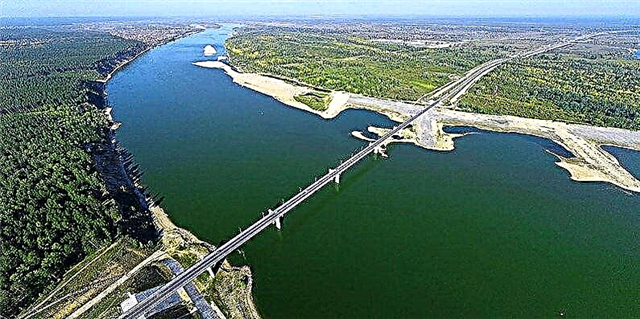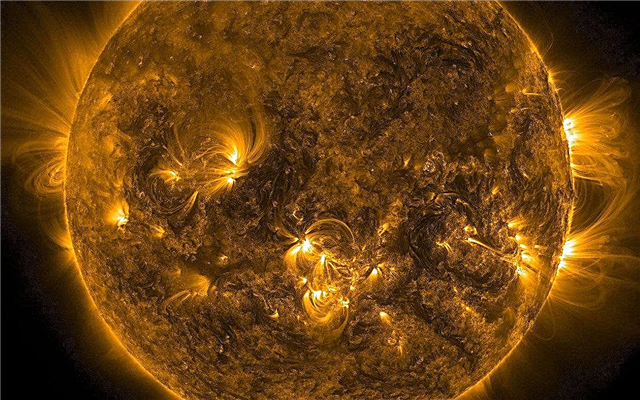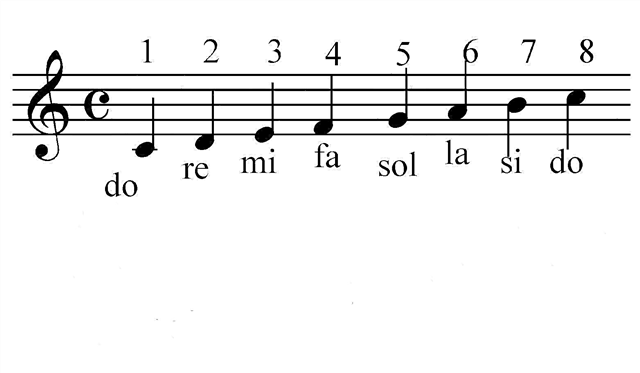
When two factors combine in a certain area, sand and wind, sand dunes certainly appear there. To understand why the dunes do not crumble, you need to find out the principle of their appearance.
How are dunes formed?
In fact, a dune is a sandy hill that formed as a result of strong winds. They are often called dunes, and although it is almost the same thing, dunes are a kind of dune. The main difference between them is the form and presence of vegetation. The dune is directed to the wind with the concave side, since its edges are usually quickly covered with vegetation and fixed in place. The dune is turned to the wind with a convex side due to the rapid displacement of the edge parts, and there are never plants on it.
A small sand mound is enough to form a dune. It can occur on a completely level ground. There will be enough minimal support in the form of a stone or some kind of plant, so that under the influence of wind the sand begins to linger and accumulate in this area. Gradually, the sandy hill increases in size and turns into a serious obstacle to the wind. If the wind blows in one direction for a long time, the hill acquires large dimensions and a certain shape. In some cases, even support is not required to form a dune. A small sandy roughness begins to delay new grains of sand that fly low above the ground.

In the deserts you can often see wavy sand hills.This means that the wind there is blowing with great force, but in one direction. At the same time, there is practically no vegetation, which also affects the formation of dunes. They can also form with a small amount of sand. In this case, the dune resembles the tip of a spear. Most often, the wind often and dramatically changes direction. Because of this, the hills take on various forms, for example, in the form of a star with a large number of rays.
Why don't the dunes crumble?
The peculiarities of the formation of dunes of their shape become the reason that such hills do not crumble. The fact is that a certain critical angle is necessary for shedding sand. Although the slope of the hill is steep (34 degrees), it is not enough for the entire structure to fall apart. The top crumbles a little, but this only causes the movement of the dune, since at the same time the wind brings new sand.
Interesting fact: the highest dunes (up to 400 m) are located in the Namibian desert. In addition to sizes and shapes, they can also vary in color. There are various shades of hills from yellow to red.
Why are the dunes moving?
Almost all sand dunes are mobile. They are never at rest due to the strength of the wind. His impulses pick up a lot of grains of sand, lift them up the gentle slope and throw them over the top. Sand grains fall down, resulting in a slow but noticeable movement of the dune. Where previously there was one dune, "moved" to a new place, another gradually forms.
Numerous chains of sandy hills appear in the deserts in this way.They, in turn, can unite in the largest chains. For example, in the Chinese desert of Takla Makan, stripes of dunes about 3 km long were discovered.

Dune speed
Dunes can move at different speeds. It all depends on the type of sand, the surface of the earth, the strength and direction of the wind. The average speed of the dunes is 10-20 meters per year. The strongest gusts of wind are observed in the upper part of the hill, and the weakest - in the lower. Also below, sand receives moisture from the ground. All this inhibits the movement of the dunes. And moisture contributes to the appearance of plants.
In harsh desert conditions, they tend to have long, strong roots. Plants cover the edges of the hills and hold them in one place. At the same time, the middle part remains without vegetation and continues to move. Thus, the width of the dune decreases, and the length increases. If the wind does not begin to blow strongly and only occasionally, the vegetation can conquer and cover the entire dune, turning it into a green hill.
Dune Sounds
Interestingly, the dunes can make sounds, and quite loud. The nature of the sound can be completely different and resemble a rattle, grunt, squeak, etc. For example, hills located off the coast give a melodic whistle. And in the middle of the desert, the dune can buzz - this sound is heard due to the descent of a sand avalanche from the very top. It can be heard at a distance of about 10 km, the duration of the hum is sometimes up to 15 minutes. It is also possible a sensation of soil vibrations under the feet.
Dune appears when there is a sufficient amount of sand and strong wind. It begins with a small mound, even on a flat surface or in the presence of a support (stone, plant). Particles of sand linger and form huge hills with a gentle slope on one side and sharp on the other. Dunes do not crumble, because they have an insufficiently steep angle of inclination. Further blowing of the wind facilitates the movement of the dune at a speed of 10-20 m / year.












